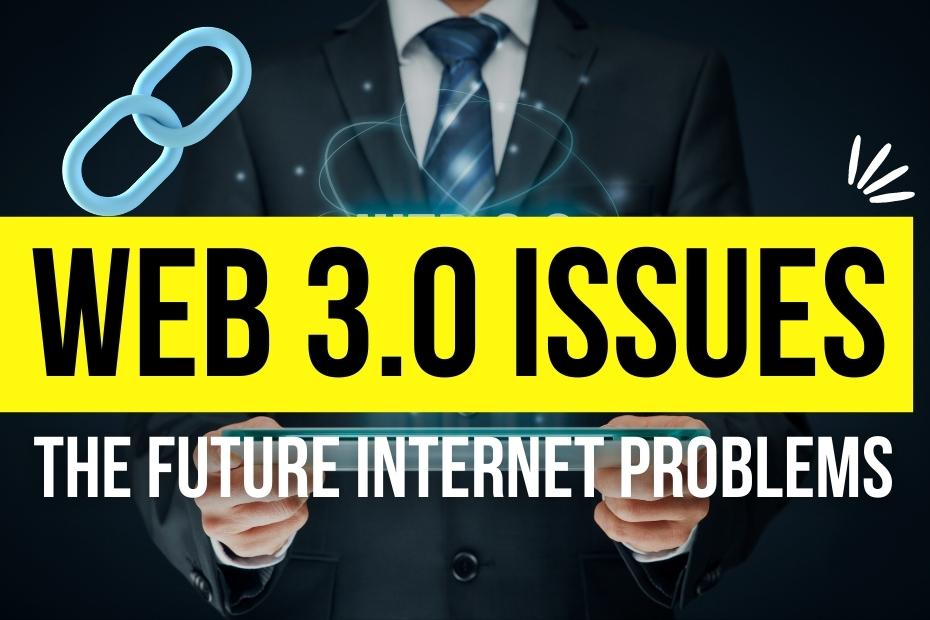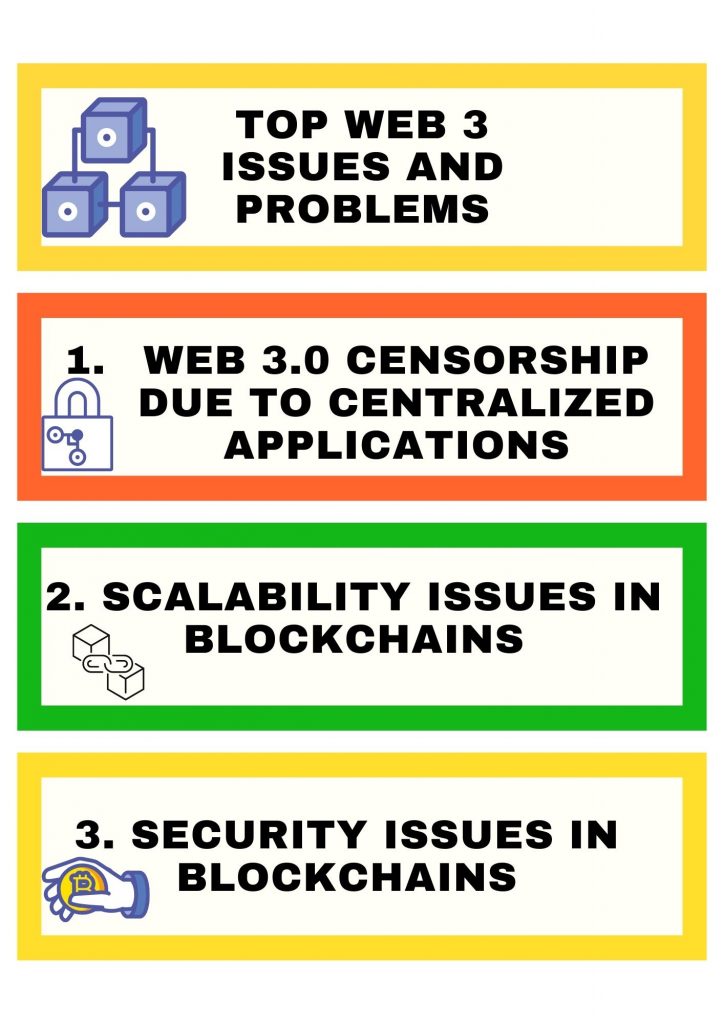
Web 3.0 promises to be a censorship-resistant web that no one controls but certain web3 issues may be stopping web3 to achieve its goals. The governments or agencies can not control it. You can put anything you like on the internet and blockchain and it will remain there. But there are some Web3 issues that it must come up with the solutions before web 3.0 can actually explode on the horizon.
Table of Contents
What is the idea behind Web 3.0?
Web 3.0 is an idea based on blockchains that will revolutionize internet applications as we know them. Web 3.0 aims to put control back to users and improve the overall privacy of users. Web3 aims to let users control their data instead of multi-billion firms like meta or google and relies on advanced machine learning algorithms, the notion of semantic web and decentralization being provided by blockchains.
Web3 Issues
Web 3.0 is not without its disadvantages and issues. The recent Ukraine – Russia crypto war has not only highlighted the importance of cryptocurrency but it has also brought forward some of the issues with web 3.0 and cryptocurrencies. Web 3.0 has problems. Let’s see the top 5 Web3 issues that are hindering the progress of Web3 applications.
- Web 3.0 censorship due to centralized applications
- Scalability issues in blockchains
- Security issues in Web3
- The problem of the heavy cost of transactions on blockchains.
- Bad User experience in Web3
1. Web 3.0 censorship due to centralized applications
The biggest advantage that Web 3.0 promised was that it will be censorship-resistant. However, several countries are banning the underlying web3 applications. Moreover, the key web 3 infrastructure applications are also avoiding operating in some countries. We have also seen crypto exchanges considering banning all crypto wallets of Russia due to the war. So, the underlying promise of Web 3.0 is already under attack adding to web3 issues.
Metamask is not available in several countries
Metamask is a popular crypto wallet. Metamask relies on Infura which is a blockchain node infrastructure. As per reports, Infura tries to maintain compliance with US sanctions and is not providing services in Iran, North Korea, Cuba, Syria, and the Crimea, Donetsk, and Luhansk regions of Ukraine.
NFT marketplace Opensea is not accessible in some countries
Opensea is the biggest NFT marketplace on Web 3.0. The service also relies on Infura and similarly is not available in countries sanctioned by the united states.
The solution to avoid censorship on Web 3.0
No one can implement strict web 3.0 censorships and countries can not completely turn off service. So, to avoid censorship, the best method is to code your own wallet if you can write your own code. If not, get a hardware wallet that does not rely on some central entity. The same is the case with crypto wallets on crypto exchanges. Exchanges can hold your funds and suspend your wallet transactions. So, it is better not to keep your cryptocurrency on exchanges wallets. You can even run your own blockchain node and become part of the blockchain to run your applications natively on the blockchain. So, learning the web3 development yourself may resolve many of the web3 issues.
2. Scalability issues in Blockchains
The scalability issue in blockchains is how to handle the increasing number of blockchain nodes and transactions. In blockchains, a consensus mechanism runs on all blockchain nodes to verify a transaction which takes time. As the number of applications on blockchains is increasing, we need to find a solution to handle the increasing amount of transactions.
Usually, better consensus mechanisms are proposed to solve the scalability issue in blockchains. Moreover as per Moor’s law number of computation power doubles every to years, so, we may be overestimating the scalability issues in blockchains.

3. Security issues in Web 3.0
Web3 issues are not only limited to productivity there are still security issues with Web 3.0. In the past, we have seen many examples where hackers were able to manipulate the loopholes for financial gains. For example a loophole in wormholenetwork which is used to interface different blockchains resulted in the minting of 120,000 Eth by malicious actors. Similarly in 2016, the attackers were able to withdraw a sum of $70 million due to faulty coding of “The DAO”.
4. The problem of the heavy cost of transactions on blockchains.
One of the most important problems of using blockchains is the transaction costs. There are heavy fees involved for every transaction. A transaction on the Ethereum blockchain may cost up to $50. Although different blockchains have adopted different solutions to reduce the cost, it still haunts many web3 applications.
5. Bad user experience in Web3.
Web3 has not been designed to be user friendly. In most cases, you have to set up your wallet, link your wallet to the application to get an application working which is far more work than we are used to in Web 2.0. Moreover, the following adds to the overall bad trust level on Web3 applications
- There is very less documentation available mostly for Web3 Applications.
- The knowledge hub and community is not too responsive.
- Many of the Web3 projects proved to be a scam.
- There are very few trusted communities in web3.
Problems with Web 3.0 – The foreword
There are some still centralized failure points of Web 3.0. But the issues are going to be resolved sooner or later. Web3 is still in its infancy. Web3 developers are working to decentralize things and to move one step at a time, some dependencies have still been kept on centralized servers to avoid some of the web3 issues and blockchain problems. But, that does not mean everything is bad with Web 3.0. At least, we are moving towards our objective of decentralization one step at a time.
FAQ
What is the scalability issue in blockchains?
The scalability issue in blockchains is the limitation of blockchains to handle the increasing number of transactions and nodes with optimal performance.
Can DAO be hacked?
Yes, if the smart contract code is not properly audited and secured, there is a possibility that DAO can be hacked. The DAO attack occurred in 2016 in which hackers were able to withdraw a sum of Rs 70 million.
Can Governments censor or block web3 applications?
No, Web3 is created on a decentralized notion and is based on blockchains. Even if the government or ISPs try to block entry points like a wallet there exist alternatives with which you can continue using the Web3 application.
Can I use Metamask and Opensea from any country in the world?
You can use Metamask and Opensea market from nearly every country in the world. However, these services rely on infura which do not allow services in countries sanctioned by US eg:- Iran.
Disclaimer
The Post is only the views of the author and should not be taken as legal or financial advice.